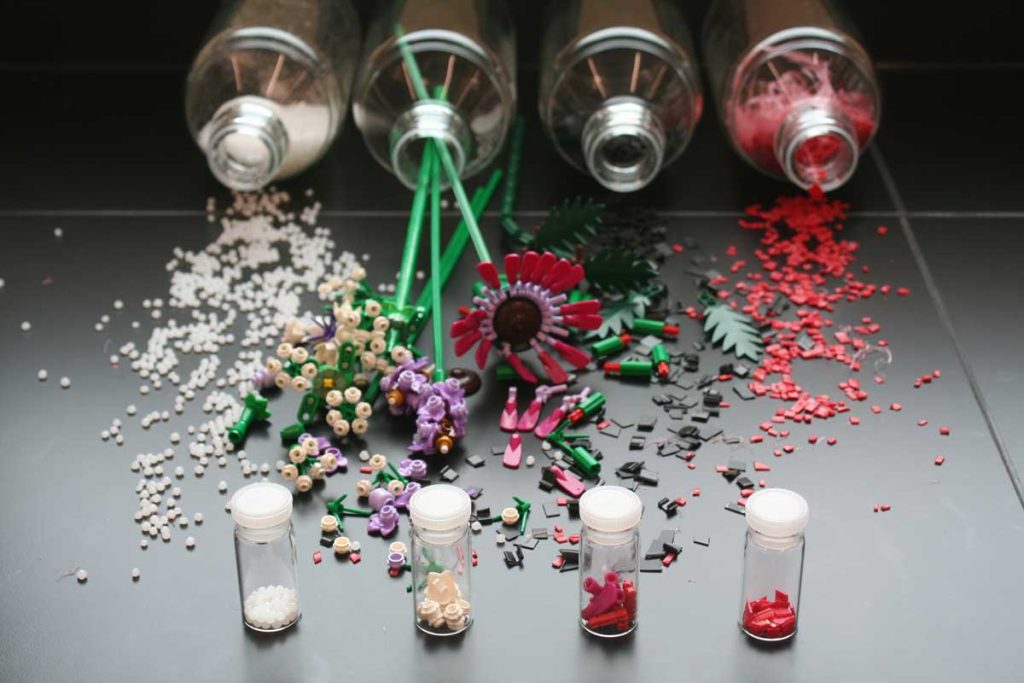Semi-finalist 2024
| Submitted by: | Kiera Greenaway |
| Department: | Civil and Environmental Engineering |
| Faculty: | Engineering |
Plastic is ubiquitous in water, and these resilient, complex materials increasingly threaten human and environmental health. My research investigates the degradation mechanisms of polyethylene microplastics in the environment. Of the plastics I am studying, three are included in the photo, each spilling from a large jar. In the fourth jar, instead of my plastics, Lego flowers spill onto the counter instead. The inclusion of decorative plastic plants highlights the multidisciplinary nature of the plastic pollution crisis beyond overproduction – a nod to the ironic and insidious nature of plastic over-consumption. The released plastics mix together on the counter, blurring the line between what is considered waste and not. The mess of plastic pieces on the counter echoes the complications of plastics in the natural environment. The smaller vials in the foreground contain samples from the mess, two of which are subtly Lego. The image is focused on these samples to emphasize the lesser emphasized reality of plastic production and pollution: regardless of the source or intended use, every piece of plastic released to the environment is considered a contaminant.
Was your image created using Generative AI?
No.
How was your image created?
I took this picture in my lab, next to the station I conduct my research at. The vials, jars, and microplastics in the jars are all leftover from previous experiments. I played with natural lighting by adjusting the window shades and taking pictures at multiple times during the day. I spilled some of each sample onto the clean counter before adding the partially disassembled the Lego flowers. Ironically, the mess was the most time-consuming part of the image creation process. While I wanted the plastics to look messy on the counter, I also wanted clear distinctions between each type, in order to emphasize their commonality as contaminants in the vials. I also wanted to demonstrate the difficult position science has when addressing the plastic pollution crisis, by intentionally not including each type of plastic in a vial. This is representative of my personal struggles around defining the scope of my research, and the idea that it is not reasonably possible to investigate every type of plastic in every environmental condition. Understanding the inability of science to fully address this crisis on its own is critical driver towards the development of a multidisciplinary solution.

